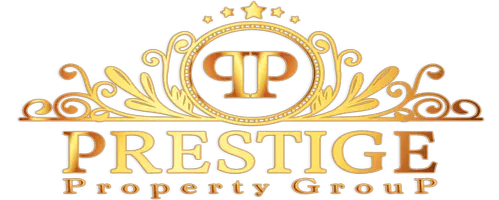What Are Phase Inspections For New Construction Homes?

Buying a home comes with its fair share of stress, but building one adds a whole new layer of moving parts. Whether you’re building your dream home in Boise, ID, or watching a new construction rise in Atlanta, GA, one thing stays the same: you want confidence that it’s being built right.
When building a home, you’ll still want to get your new home inspected—not just before move-in, but at many different stages in the construction process. That’s where phase inspections come in.
What are phase inspections?
A phase inspection is specifically for new construction homes, when an inspector goes through the house at specific stages during the building process. Also known as a 3-phase inspection, this inspection process is used when building a home to catch problems early and while they can still be addressed.
Each inspection phase ensures that what is being built meets building codes, follows approved plans, and avoids mistakes that could get hidden as construction moves forward. Even brand-new homes can have issues with the framing, electrical, plumbing, or drainage that are harder to catch once drywall and flooring go in.
What are the phases in a new construction phase inspection?
Phase inspections are broken down into 3-4 phases, depending on if you’re buying a custom-built or production build home.
Phase 1: Pre-pour/pre-foundation
Before pouring the foundation slab, an inspector will look at the site prep, footing trenches, rebar, pipe sleeves, drainage, and plumbing stub-outs. This phase is meant to make sure the foundation is built correctly before the concrete hides any defects.
Phase 2: Framing/pre-drywall
After framing and mechanicals, but before insulation and drywall, you’ll want to get another inspection. This time, the inspector is checking the framing, structural connections, plumbing and electrical rough-in, HVAC ductwork, roof structure, fire blocking, and flashing. Ever wish you could open the walls of your home and see what could be wrong? Now is the time to get the behind-the-wall parts of the home inspected.
Phase 3: Final/pre-closing
When the home has mostly been completed, but before move-in, an inspector will do a full-system check, similar to a regular home inspection. They’ll be checking what is visible and operable, like the plumbing, electrical, HVAC, appliances, site grading, and exterior components, while also making sure everything is up to code. This inspection is separate to the blue-tape walkthrough you’ll do with the builder to check finishes and the final build.
Phase 4: 11-month warranty
This optional but valuable one-year warranty inspection takes place near the end of your builder’s warranty period. By this point, you’ve lived in the home long enough to notice small issues that might come up as the house settles. A licensed home inspector will perform a full review, similar to a standard home inspection. If they uncover any problems related to the original build, you’ll still have time to request repairs under the builder’s warranty before it expires.
How much does a phase inspection cost?
New construction phase inspections vary in price depending on the location, size of the home, and the number of inspection phases you schedule. On average, you can expect to pay between $100-$500 per phase, or around $800-$2000 for a full three or four phase package that covers your build from start to finish.
When to schedule each inspection
It’s a good idea to book your inspector early (ideally before construction starts) and share your builder’s timeline so they can pencil in tentative inspection dates. Inspectors often get busy during peak building seasons, and missing your inspection window can mean important areas get missed (like foundation footings or the systems behind the walls).
- Pre-pour inspection: Schedule before the foundation concrete is poured (usually a one or two day window).
- Pre-drywall inspection: After framing, plumbing, electrical, and HVAC rough-ins are complete, but before the insulation and drywall go in.
- Final inspection: Schedule when the home is nearly finished, before your final walkthrough or closing.
- One-year warranty inspection: Get the inspection between 10-11 months after the build has been completed, before the builder’s warranty expires.
What inspectors look for during each phase
A good phase inspector knows that every stage of construction reveals different potential issues. Their job is to make sure each part of your new home is built correctly, before it’s covered up or becomes expensive (or impossible) to fix later.
Pre-pour foundation phase
Before concrete is poured, the inspector looks at the groundwork that supports your entire home. The aim of this inspection phase is to help prevent long-term problems like foundation cracks or drainage issues.
They’ll look for:
- Proper footing depth and width
- Correct placement of rebar and post-tension cables
- Plumbing and electrical conduit set and secured in the right locations
- Adequate grading and drainage to prevent water pooling under the slab
- Signs of poor soil compaction or improper vapor barriers
Pre-drywall framing phase
Once the framing, roofing, and systems are in place, but before the walls are sealed, inspectors will look at everything that lives within the frame of the house that can be expensive and complicated to fix later.
They’ll check for:
- Framing quality: Straight, level, and properly braced walls and beams
- Structural connectors: Missing or misaligned hurricane ties, joist hangers, or fasteners
- Plumbing and electrical rough-ins: Proper placement, labeling, and support
- HVAC ducts: Correct sizing, sealing, and routing
- Fire blocking and insulation prep: Ensures code compliance and energy efficiency
Final completion phase
As construction wraps up, inspectors will do a full walkthrough of the finished home, similar to a standard home inspection to confirm the house is move-in ready and everything works as it should.
Inspectors will look over:
- Major systems: HVAC, plumbing, electrical, and appliances
- Roofing and exterior elements: Gutters, flashing, siding, and grading
- Interior finishes: Doors, windows, flooring, cabinetry, and paint
- Functionality checks: Outlets, switches, water flow, heating and cooling performance
- Safety items: GFCI outlets, handrails, smoke detectors, and ventilation
One-year warranty phase
Before your home hits the 12-month warranty expiration, it’s a good idea to have an inspector return to evaluate how your home has settled. If they spot any defects linked to the original build, you’ll still have time to request warranty repairs before coverage ends.
They’ll look for:
- Cracking or shifting in walls, ceilings, or foundations
- Leaks or drainage issues that developed after seasonal weather changes
- Mechanical wear in HVAC or plumbing components
How to use phase inspections during construction
Once each phase is complete, you’ll receive a detailed report with photos, notes, and recommendations for any issues found at each step.
1. Coordinate with your builder early
If you’re working with a builder or general contractor, share your inspection plans upfront, ideally before construction starts. Most builders are accustomed to third-party inspections and will schedule work around them. Confirm that your builder will pause work, if needed, to address any problems that were identified during inspection before proceeding to the next construction phase.
2. Include inspection contingencies in your contract
When you’re under contract for a new construction home, consider adding inspection contingencies that allow you to review findings and request repairs before closing.
- For custom built homes, include a clause that lets your inspector access the site during the key construction milestones mentioned earlier.
- For builder developments or spec homes, your contract may specify when new construction inspections are allowed; review this carefully with your agent before signing.
3. Use inspection findings to request repairs or holdbacks
Once your inspector delivers the report, it’s important to communicate the findings with the builder. Some processes are similar to when requesting repairs from a seller in a regular real estate transaction, but in the case of a custom home, you have the right to address everything on the report—ideally in a collaborative manner. In some cases, you can also use the findings to negotiate a holdback, setting funds aside in escrow until the builder completes specific repairs.
- Start with the facts: Reference specific items in the inspection report and share photos or page numbers, so there’s no confusion about what needs attention.
- Keep everything in writing: Follow up verbal conversations with a quick email recap. This creates a paper trail of what was discussed, agreed on, and when fixes are expected.
- Prioritize major issues: Focus first on safety, structural, or code-related concerns. Builders are more likely to act quickly on items that clearly affect performance or compliance.
- Ask for realistic timelines: Most builders will need time to coordinate subcontractors for repairs. Confirm when each issue will be addressed and how it may affect your build schedule.
- Stay professional: Avoid emotional language or placing blame. Approach your builder as a partner on a project with the goal being you both want the home finished correctly.
- Request confirmation: Once repairs are complete, ask for photos or documentation showing the fix, or schedule a short site walk to verify it in person.
New doesn’t mean perfect
Just because a home is new, it doesn’t mean it’s perfect. Mistakes happen all the time, and the best way to protect your future home is to use phased inspections to check in at crucial points during the build process. The cost of getting your home inspected at each phase is minimal compared to the amount of protection it offers. Plan inspections ahead of time with your builder and inspector, and then rest easy knowing that your home has been thoroughly looked over—from the foundation to the finishes.
FAQs about phase inspections
Do phase inspections replace the municipal building inspections?
No. Municipal inspections are required by your city or county to ensure the home meets local building codes. A phase inspection is an independent, third-party check that goes beyond minimum code requirements to verify quality and workmanship. It’s an extra layer of protection.
Can a builder refuse a phase inspection?
Most reputable builders won’t (and shouldn’t) refuse a phase inspection. But it’s best to discuss your plans before construction begins and include inspection access in your contract. Some builders may require advance notice or request that inspections occur at specific stages to avoid delays in construction.
Are phase inspections mandatory or optional?
Phase inspections are optional but highly recommended for new construction homes. While municipal inspectors check for code compliance, a private inspector works solely for the buyer, identifying issues that could affect quality, safety, or long-term performance.
The post What Are Phase Inspections For New Construction Homes? appeared first on Redfin | Real Estate Tips for Home Buying, Selling & More.
Categories
Recent Posts










GET MORE INFORMATION

